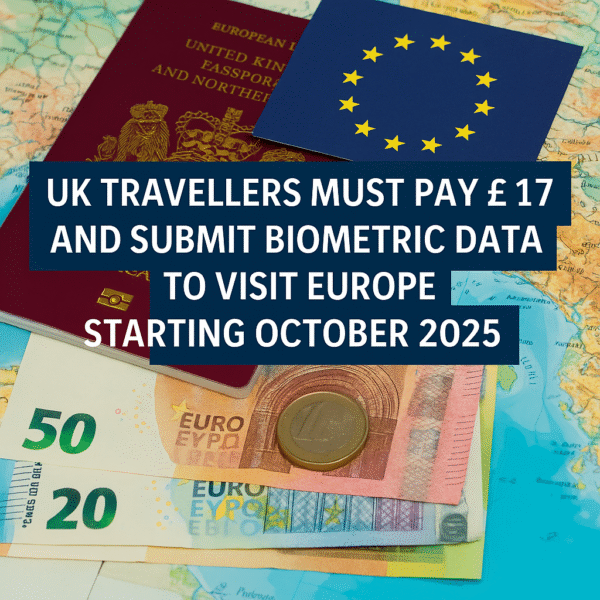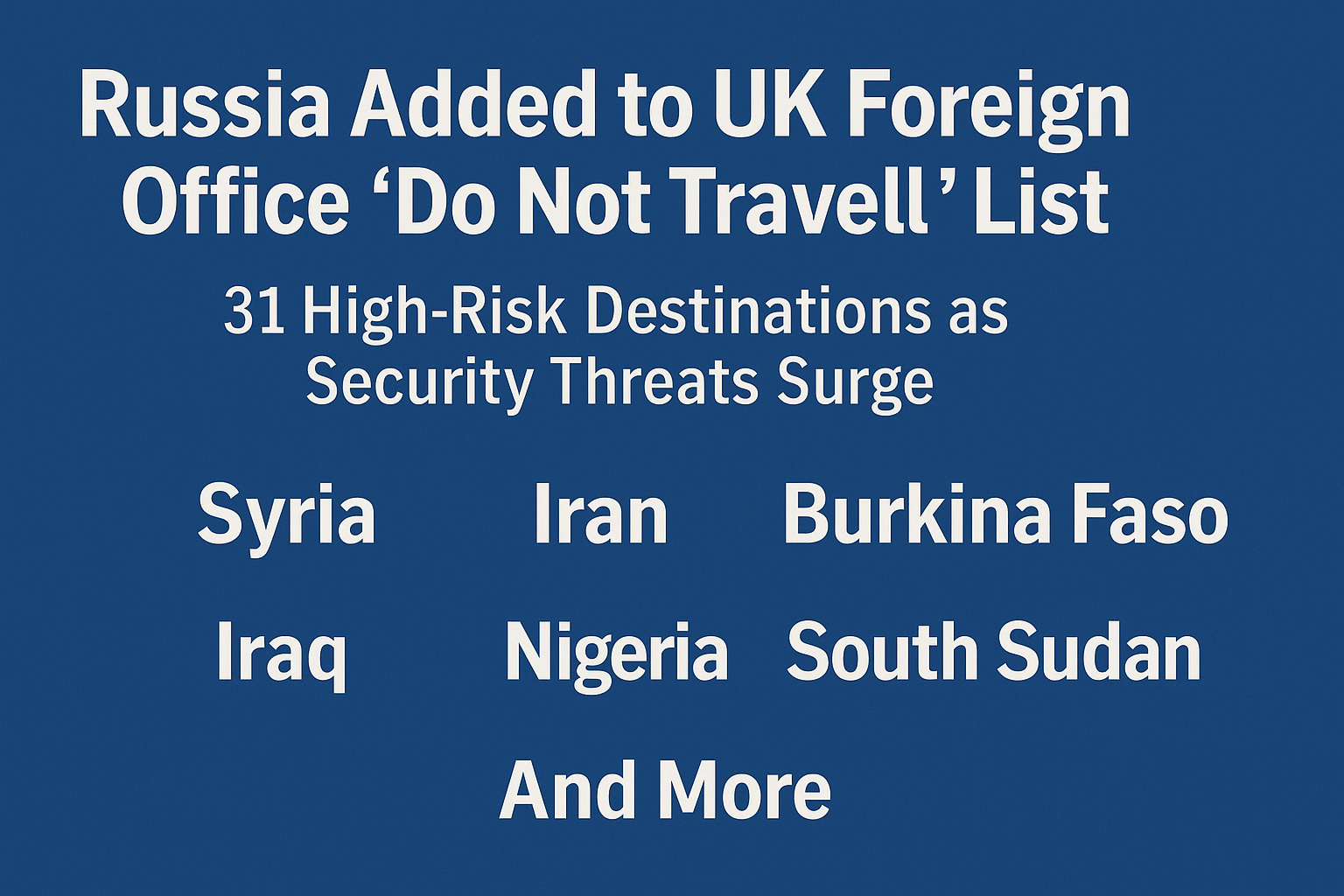UK holidaymakers planning trips to Europe will soon face a major shift in entry requirements, including a new £17 fee and mandatory biometric data collection. These changes are part of the European Union’s rollout of the Entry/Exit System (EES) and the European Travel Information and Authorisation System (ETIAS), which together aim to strengthen border control and streamline the arrival process for non-EU travellers, including British citizens.
The changes, which take effect from October 12, 2025, mean that UK travellers will need to apply for an ETIAS visa waiver before visiting most EU countries and provide fingerprints and facial scans at border checkpoints under the EES.
What Is ETIAS and Why It Affects UK Travellers
The ETIAS (European Travel Information and Authorisation System) is a visa-waiver program similar to the U.S. ESTA. It applies to non-EU nationals from visa-exempt countries, including the UK. While British citizens will not need a full visa to enter the Schengen Area, they will be required to complete an online ETIAS application and pay a £17 fee — more than double the previously estimated €7 (£6) cost.
The system is designed to pre-screen travellers for security and immigration risks before they enter the EU. Once approved, an ETIAS is valid for three years or until the traveller’s passport expires and permits multiple short stays of up to 90 days within any 180-day period.
ETIAS will apply to travel across 30 European countries, including:
- France
- Germany
- Italy
- Spain
- Greece
- Austria
- Netherlands
- Portugal
- Sweden
- Belgium
- Norway
- Switzerland
- Croatia
- Czech Republic
- Romania
- Finland
- Poland
- Hungary
- Denmark
- Iceland
- Lithuania
- Latvia
- Estonia
- Malta
- Slovakia
- Slovenia
- Liechtenstein
- Bulgaria
- Cyprus
- Luxembourg
Travellers under 18 and over 70 will be exempt from the fee, though they must still apply. Applications must be submitted through the official EU portal, once it goes live later this year.
The Entry/Exit System: What UK Travellers Should Know
Alongside ETIAS, the EU is launching the Entry/Exit System (EES), a biometric border monitoring system that will replace the traditional passport stamping process. Every time a non-EU national enters or exits the Schengen Area, the EES will log their biometric data — including fingerprints and a facial image — along with the dates of entry and exit.
This digital registration is aimed at detecting overstays, identifying visa fraud, and speeding up border processing. The EES system rollout begins in October 2025 and is expected to be fully operational by April 2026 across all EU external borders.
According to the European Commission, the EES will enhance internal security while helping travellers avoid the confusion caused by manual passport stamping. Travellers arriving at high-volume entry points such as Paris Charles de Gaulle, Madrid Barajas, or Amsterdam Schiphol will see automated border gates introduced or upgraded to accommodate biometric processing.
Why the New Rules Matter for UK Travellers
Since Brexit, UK citizens have been subject to “third-country” rules when travelling to the EU. This means they no longer enjoy freedom of movement across EU states and are subject to the same procedures as other visa-exempt non-EU nationals.
The introduction of ETIAS and EES further formalises these requirements. For frequent travellers, second-home owners in Europe, and even families planning school holiday trips, the need to pre-register and pay an additional £17 fee adds a new layer of planning — and potential cost — to European travel.
Failure to comply with ETIAS or biometric registration at the border could result in entry refusal, fines, or complications with future visits. Travel insurance providers have already begun advising customers to monitor the implementation timeline and ensure they meet all new requirements before departure.
Travel Industry Reaction and What Tourists Should Do
While the European Commission insists that ETIAS is not a visa, UK travel industry groups have warned that many travellers may be caught off guard by the new requirements. According to ABTA (The Travel Association), more clarity and communication are needed to ensure UK tourists are not delayed at the border during the busy autumn and winter travel seasons.
British travellers planning trips from October 2025 onwards are urged to:
- Monitor updates via the UK Foreign, Commonwealth & Development Office (FCDO)
- Apply for ETIAS via the official EU website when applications open
- Ensure passports are valid for at least three months beyond intended departure
- Arrive at EU borders early to allow for biometric registration delays
Looking Ahead: A More Secure, Tech-Driven Future for EU Travel
Although the new ETIAS and EES regulations may initially cause confusion or inconvenience, EU officials maintain the systems are essential to improving the security and efficiency of international travel.
These developments place the EU alongside the U.S., Canada, and Australia, all of which use similar pre-travel screening systems. For UK travellers, adapting to this digital travel evolution will soon become routine.
As tourism rebounds across Europe post-pandemic, being informed and prepared is more important than ever. With the right preparation, British tourists can continue to enjoy seamless travel across the continent — even in a changing regulatory landscape.
For more travel news like this, keep reading Global Travel Wire



















